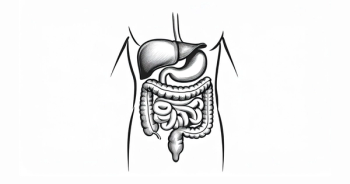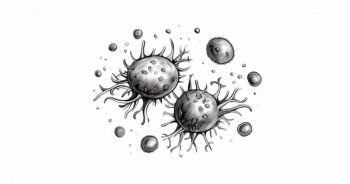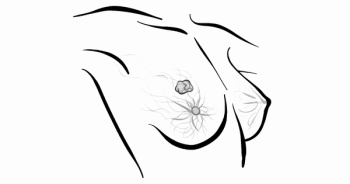
Daratumumab/Lenalidomide Maintenance Boosts MRD Negativity in Myeloma
Ashraf Z. Badros, MBChB, discussed the results from the AURIGA trial of maintenance therapy with daratumumab and lenalidomide in newly diagnosed multiple myeloma.
Maintenance therapy with subcutaneous daratumumab (Darzalex) plus lenalidomide (Revlimid) led to significant improvements in minimal residual disease (MRD)-negative conversion rates vs lenalidomide alone when used for the treatment of patients with newly diagnosed multiple myeloma following transplant, according to primary results from the phase 3 AURIGA trial (NCT03901963).1
In the AURIGA trial, patients aged 18 to 79 years with newly diagnosed multiple myeloma were eligible for enrollment if they received at least 4 cycles of induction therapy and underwent autologous stem cell transplant (ASCT) within 12 months of the start of induction. Patients were required to have very good partial response (VGPR) or better to induction therapy at trial screening. Patients were also required to be MRD positive at a 10–5 sensitivity following ASCT and be naive to anti-CD38 antibodies.
Once enrolled, patients were stratified by cytogenetic risk (standard risk/unknown vs high risk) and randomly assigned in a 1:1 fashion. Patients in both arms (n = 200) received up to 36 28-day cycles of maintenance therapy with oral lenalidomide at 10 mg daily; following cycle 3, the lenalidomide dose was allowed to be increased to 15 mg daily if tolerated. In the investigational arm, patients also received subcutaneous daratumumab at 1800 mg once a week for cycles 1 and 2, once every 2 weeks for cycles 3 through 6, and once every 4 weeks starting in cycle 7 and beyond.
The primary end point of the study was MRD-negative conversion rate from baseline to 12 months after maintenance therapy. Progression-free survival (PFS), overall MRD-negative conversion rate, sustained MRD-negative rate, response rates, duration of complete response (CR) or better, overall survival, and safety served as secondary end points of the trial. MRD data were obtained after cycles 12, 18, 24, and 36.
Data from the study, which were presented at the
In the ITT population, the rates of conversion to MRD negative with a CR or better by 12 months were 44.4% and 14.9% in the in the daratumumab combination and lenalidomide alone arms (OR, 4.61; 95% CI, 2.34-9.09; P <.0001). This MRD-negative conversion rate benefit with the addition of daratumumab to lenalidomide was observed across all clinically relevant patient subgroups, including patients with high-risk and standard-risk disease.
In an interview with Targeted OncologyTM, Ashraf Z. Badros, MBChB, professor of medicine, director of the Multiple Myeloma Service, and vice chair of the Clinical Research Committee for the Program in Oncology at the University of Maryland School of Medicine in Baltimore, further discussed the results from the AURIGA trial.
Targeted OncologyTM: Please discuss the background of the AURIGA trial.
Badros: The study is a randomized phase 3 trial that was conducted in the US and Canada. It included patient that had received a minimum of 4 cycles of induction that did not include an anti-CD38 antibody, so there was no daratumumab or isatuximab [Sarclisa] followed by transplant within 12 months, and patients should be in very good best response or better after the transplant and are MRD-positive by next-generation sequence at 105 threshold. Patients were stratified by cytogenetic risk and randomized within 6 months of transplant to daratumumab/[lenalidomide] or lenalidomide alone. Treatment was given on the trial for 36 months. MRD testing was done at 12, 18, 24, and 36 months, and the primary end point of the study was MRD-negative conversion rate at 105 after 12 months of maintenance.
What were the results of the AURIGA trial of daratumumab and lenalidomide vs lenalidomide maintenance in patients with newly diagnosed multiple myeloma?
The trial primary’s end point, which is MRD-negative conversion rate at 12 months, was 50.5% for lenalidomide and daratumumab vs 10.8% for lenalidomide alone, and that difference was statistically significant.
Patients achieved deeper complete responses when they received the daratumumab/lenalidomide after randomization. It was 75.8% vs 61% in the lenalidomide alone arm and progression-free survival at 30 months of follow-up was 83% for the daratumumab/lenalidomide arm vs 66% for lenalidomide alone arm, with 47% reduction in the risk of progression or deaths favoring daratumumab and lenalidomide vs lenalidomide alone. These are the main results from the trial.
Adverse events overall were expected, with slightly higher rates in the daratumumab/lenalidomide arm. Serious adverse events occurred in 30% of patients in the [daratumumab/lenalidomide] arm compared with 22% in the lenalidomide arm. The most common adverse event was neutropenia, which was noted in approximately 54% of the [daratumumab/lenalidomide] arm and 47% of the lenalidomide arm. This trial was conducted during COVID-19, and more COVID infections were observed in the [daratumumab/lenalidomide] arm.
However, surprisingly, there was no significant high-grade toxicity noted in the trial, and most patients did well. The discontinuation rate due to adverse events was higher in the [daratumumab/lenalidomide] arm, at 14%, compared with 8% in the lenalidomide arm. It is important to note that patients stayed longer on the daratumumab/lenalidomide arm, with a median duration of 30 months vs 20 months for the lenalidomide arm, indicating nearly an extra year of treatment with [daratumumab/lenalidomide]. We believe that the longer drug exposure accounts for the additional reporting and higher risk. Aside from cytopenia and infection, no new safety signals were identified.
What are the key takeaways from the phase 3 AURIGA trial?
The addition of daratumumab to lenalidomide achieved a high MRD-negative conversion rate. The catch for the community is, do we check MRD-negative conversion rate? Unfortunately, most patients do not have access to MRD testing upfront and during their treatment journey. So that will be a message that probably can be addressed.
The addition of daratumumab to lenalidomide resulted in a higher MRD-negative rate, deepened the responses, so we see a higher complete response rate compared with lenalidomide alone, and improved progression-free survival. We are looking at 30-month PFS rates that are higher for daratumumab plus lenalidomide vs lenalidomide alone, so it is all a beneficial treatment option for the patients from our trial that did not receive daratumumab upfront.
If you look at other trials, like the PERSEUS [NCT03710603] and the GRIFFIN [NCT02874742], it’s clear that adding daratumumab to lenalidomide in this particular setting, even after receiving it in induction, further deepens the responses and improves the MRD-negativity rate. So, I think the fact that we used daratumumab upfront does not mean you cannot use it during maintenance or after transplant, because there is further reduction in the tumor load and deeper responses with MRD negativity and CR rate. Overall, if you take the data collectively, there is rationale to inform practicing physicians that adding daratumumab might be beneficial for newly diagnosed patients after transplant, or it is beneficial, not might, it is beneficial.
What are the next steps following this study?
I think the trial really establishes the addition of daratumumab, not only to induction and consolidation, which are now standard of care, as shown by trials like GRIFFIN and PERSEUS supporting its use in newly diagnosed patients, but also as maintenance with lenalidomide to prolong or improve MRD negativity. The definitive trial will likely be conducted and reported by SWOG, which randomizes patients between daratumumab and lenalidomide vs lenalidomide alone after transplant. This trial will include patients who received daratumumab during induction. There will also be a second randomization after 2 years for patients who are MRD negative to see if they can go on observation or continue with maintenance.
The next step will likely be using MRD to guide the duration of treatment. As you know, the FDA has approved MRD, and the Oncologic Drugs Advisory Committee voted in favor of using MRD as a surrogate end point in myeloma trials, which will help with accelerated approval. For us as clinicians, the next step is going to be to use MRD data to guide treatment duration. Right now, we don’t have clear data on when to stop, but at a minimum, treatment might be stopped after 2 to 3 years. Some people would consider stopping maintenance treatment, especially in standard-risk patients, while high-risk patients and those with high-risk cytogenetics might require continuous treatment due to the higher risk of progression.









































